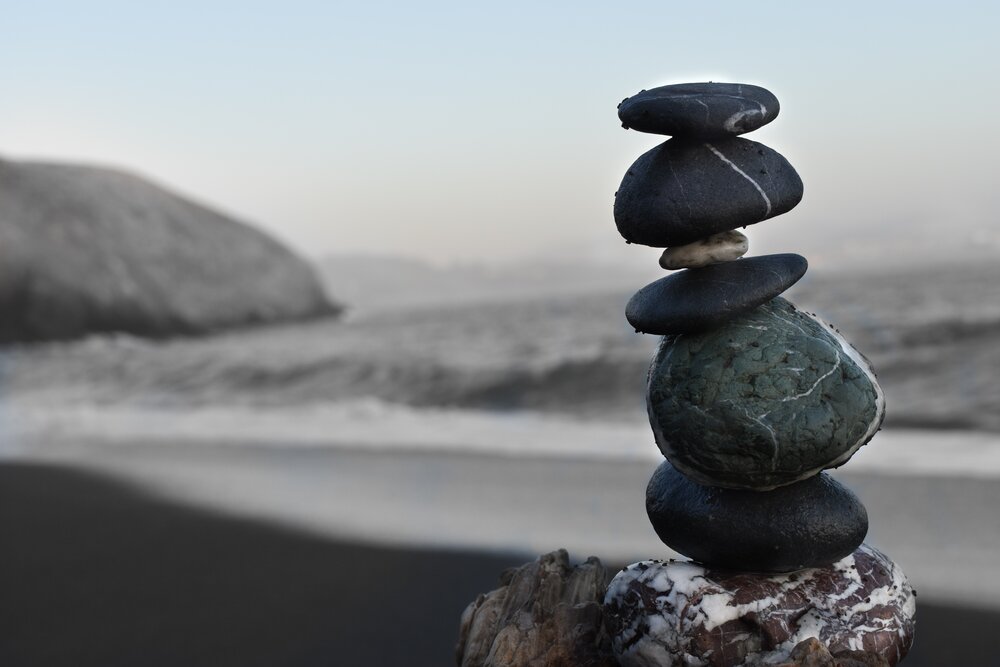The endless to-do list involved with getting a company up and running can easily consume you, without you even realizing it. But startup/entrepreneur life shouldn’t be your only life.
Here’s what happened to me…
At my startup, I found myself working every weekday, every night, and every weekend too—waking up at 3 am with new ideas that I’d get working on that second. When my family and friends told me they thought I should take my foot off the pedal a little, I dismissed them: They just didn’t get it. Weekends are the only time you get actual work done!
Predictably, I burned out—hard. The experience was miserable. To come back, I had to learn how to work productively AND sustainably. Importantly, I learned that work-life balance itself requires work, in the form of its own time and attention, strategy and goal-setting, and especially accountability.
Below I spell out 9 concrete things that I’ve learned help me achieve a feasible and appropriate work-life balance.
1. Set smart limits on your notifications.
Unanticipated notifications and calls from your phone too easily interrupt your workflow. Distraction expert Nir Eyal says it’s crucial to “slay the messaging monster” and remove those triggers that rob us of our focused work time. Worse yet, we might even subconsciously want notifications to distract us, since what we fear (or procrastinate) doing is usually what we need to do most.
As a preventative measure, set up Downtime (Apple devices) or Focus mode (Android) to only get notifications from the apps you select. Then, use it! Turn Downtime/Focus mode on before bursts of focused work time. You can also use it to make sure you get necessary breaks from work so that you’re refreshed and ready to attack things with fresh eyes every workday. You can (and should) schedule it to turn off Slack, email, and status updates in the evening and over the weekend, too. (It’s hard to go cold turkey at first, but it gets easier.)
Finally, consider using your phone’s Do Not Disturb feature as well. It similarly silences calls and notifications on a schedule you set up—except those from your favorites list. Another excellent tool to help you de-stress and engage more meaningfully at all times.
2. Structure your day effectively.
Giving your day an effective structure is essential for both greater productivity and better work-life balance. Switching tasks too many times or failing to allocate enough time for a particular task—or even scheduling tasks at ineffective times of day—all have costs. Resolving these structural issues reduces mental lag times and makes it easier to get into the flow state to do deep work. You’ll get more work done in less time, feel better about your day, and rest better at night, which will help you get into the flow faster the next day—and hence create a positive feedback loop for all of it.
To find the best structure, do some meta-scheduling. How can you avoid meetings that break up the day? Can you batch your meetings instead as well as your blocks for execution? How can you get in better sync with your team? Set agendas and expectations for meetings, and make sure that they start and end on time. Ending on time is particularly important—not doing so signals poor planning or directionless agendas, which saps energy and kills meeting productivity.
Then, be sure to physically block off your calendar for your own deep work (consider it a “meeting with yourself”). Consciously think about what level of performance you want to give each task or project at hand, and schedule the time you spend on it accordingly.
Finally, you can “biohack” your way to greater productivity and balance by aligning your schedule with your biology. We all have naturally fluctuating energy levels throughout the day. Take advantage of your natural flow instead of fighting it. If you know your mind is freshest right away in the morning, do your work then! Or, if you know your brain turns to mush at 4pm, schedule a walk to get your blood flowing and re-energize. (If you don’t know your “circadian rhythm type” yet, take the AutoMEQ survey.) Get to know your natural energy rhythms and use those insights to approach your day more intentionally and strategically.
3. Use time wizardry.
Familiarize yourself with meta-decision tools, which can help you be more confident that you’re giving your time to only the right things, while freeing up the rest. Rory Vadens‘s Focus Funnel (automate / delegate / eliminate) and time multiplication principles are a great place to start.
When it comes to deciding how to spend your time, also think: importance / urgency / significance, à la the classic Eisenhower Decision Matrix. What do you need to do now? What can you schedule? What can you delegate to someone else? And what actually doesn’t need to be done? As entrepreneurs, we can be guilty of allowing action items on our plates that don’t actually impact our business. By determining the hierarchy of importance / urgency / significance, you’re using better discretion to decide what makes it onto your to-do list. Eliminate low-leverage work as often as possible to free up time for high-leverage work.
Time-boxing is another technique that has really helped me do the minimum work that maximizes impact.
4. Align your work—and workplace—to your strengths.
On a bigger-picture level, seek to find work that you’re awesome at. If you’re not sure what that is, start with the CliftonStrengths tool. Look for a niche that is a mix of your unique experiences, but that also has opportunities to further stretch and challenge you. Beyond your strengths, what sort of work energizes you, and what depletes you? Get to know yourself better as a worker to learn where you’ll be happiest. It will also clarify what you should double-down on versus delegate or outsource.
You should find work you personally resonate with—but it’s not just about you. A big part of this has to do with the organization you lead or work for. For entrepreneurs, it’s about creating an organization with the mission, values, vision, and impact you care about. For employees, it’s about finding an organization whose mission, value, vision, and impact you care about. And this means looking for, or building, a strong leadership team that shows in real ways that they care about their people.
5. Create a vision.
It’s critical to clarify where you’re going and exactly what you’re supposed to be working on—for both you and everyone in your organization. Not only will everyone’s work be more pointed and efficient, it will also help you and your team feel less like they are trekking through mud, and more like they are gaining tangible traction toward their goals. A well-articulated vision directly translates into you and your team coming to work more engaged (or even excited) each day.
For concrete ways to articulate and implement a vision, check out my previous articles on vision and OKRs.
6. Actually use your PTO.
In normal times, many folks save their PTO for a rainy day. But even on rainy days, unlimited PTO policies in fact risk underuse, not overuse, of vacation time. During the Covid-19 pandemic, Americans working from home have also ended up reallocating a significant chunk of their former commuting time back into their job. So, for many, time off—really off—evaporated.
But we still need time off, and maybe even more than before. Instead of thinking of PTO as only something to use if or when you get to travel, think of it as a gift to yourself. Studies show it’s better to use a little vacation at a time, instead of a big chunk all at once. I like to use this trick: Take the Monday after a long weekend off to get yourself readjusted at home. It’s worth it!
Also, note that you’re setting an example for your employees. If you’re “out” for the day, but still on Slack or responding to emails, you might unintentionally stress your team out and make them feel like they shouldn’t disconnect either on their days off. Be sure to give yourself and your team total permission to unplug and restore—then you’ll all have the reserve you need when the work is intense!
7. Get a hobby.
Leading a startup takes a tremendous amount of focus. But too much concentration on one thing can actually dull our focus and rob our energy. So, push yourself to explore a side hobby where you can do something totally different, something constructive or creative, but without the pressure to be productive. “Play” is defined as engaging in activity for enjoyment and recreation rather than for a serious or practical purpose. In other words, do it just for you.
8. Meditate.
Every day. Even a little bit. Slow down and take it all in. Clear the constantly running thoughts and just breathe. The very action of focusing on the present moment—and nothing else—can help that feeling of “there’s never enough time” go away. If you’re new to meditation, there are, thankfully, plenty of fantastic apps to help get you started: Headspace, Insight Timer, and Waking Up, to name a few.
There’s an old adage that I use to gauge my mental time burden: If you don’t have five minutes to meditate, you need to meditate for an hour. (I think a lot of us could use that hour!)
9. Journal about your experiences.
Think of it as a conversation with yourself, and a record of truth. Take time to analyze your journal every six months or so, and correlate the information you see there as you re-read it with external feedback you receive from others. Ask yourself questions like: What themes continuously surface in my journaling? What triggers joy, fulfillment, and satisfaction? What subjects trigger pain, dissatisfaction, or even anger? Then, ask friends or partners if they’ve noticed any changes in your energy or mood. Seek feedback on your growth from your mentors. Look for your blindspots.
I’m certainly not always perfect with these nine things—I still slip and catch myself (or my partner catches me) all the time. But I try to “reinstate” habits and settings continuously, because I know the net effect: implementing these adjustments has enabled me to become a better, happier, and more productive worker, leader, and all-around person.
More than that, it’s allowed me to maintain sustainable, strong performance in the face of any obstacle entrepreneurship will throw at me—whether huge uncertainty, imposter syndrome, or tactical challenges I’ve never faced before. We entrepreneurs don’t, in fact, need to constantly sprint to cope with it all. Through structure, discipline, and sustainable practices, we can work smarter, use our time more wisely and with greater leverage, think more strategically, and live a fuller life—without the business consuming us.
Love what you’re reading? Subscribe to our newsletter and never miss out on our latest posts.







